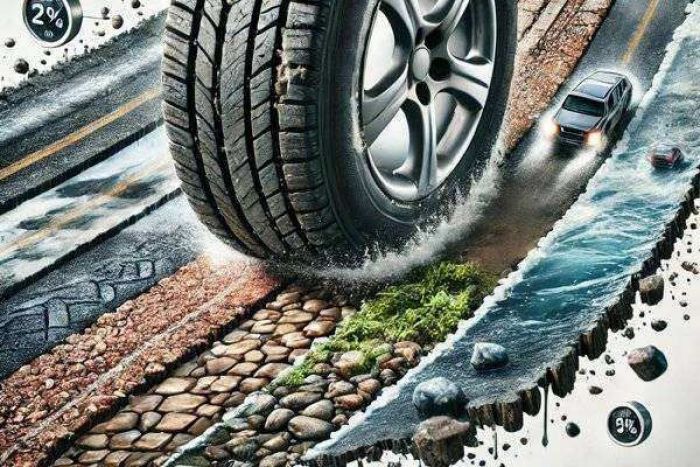General Motors produced quite a lot of small-block engines with a displacement of 5.3 liters - they are all Vortec family engines and they all share the same construction. We can divide them into two generations - the third-gen engines made from 1999 and then the fourth-gen models produced from 2006 and until even now.
Key features and my opinion about the engine
- Production years:1999-2007
- Average lifespan of Vortec 5300:350,000-380,000 miles
- Fuel supply type:port injection
- Power range:270-300 hp
- Fuel efficiency:awful
- Engine block material:cast-iron (rare versions with aluminum)
- Engine reliability score:high
- The most common problems:cooling system problems with fatal consequences, weak fuel pump, weak ignition coils.
.jpg)
Why do lifters fail so often in 5.3 engines?
General Motors LS or small block engines are pretty reliable. Most of them are truck engines that are made to last in harsh conditions constantly towing or hauling something. So, the manufacturer knew the nature of these engines and tried hard to make them almost bulletproof. But hydraulic lifters still appeared to be faulty, especially at high-mileage engines.
And I would say that the problem with the lifter doesn't always depend on the quality of maintenance. So, it's obvious that GM did a bad job in manufacturing lifters for these engines, especially the fourth-generation ones produced between 2006 and 2014. It means that lifters can easily fail and lead to other engine problems. And that's why the estimated price is so bad.
But let's start with some reasons why hydraulic lifters may fail in your 5.3 Vortec engine:
- first of all, it's the quality of the oil - bad or contaminated oil or fluid with the wrong viscosity will quite fast kill the lifters;
- stuck lifter because of high temperature - overheating will also kill lifters because the work of the entire head changes when it overheats;
- valve failure - if one of the valves fails, the lifter may get stuck because of a strong hit by a faulty valve;
- mechanical issues - if the engine was hit in a road accident, it may develop issues with lifters right after that or after some time;
- camshaft problems - worn camshafts have a bad influence on valves and lifters because they no longer support their normal work;
- lifter-well damage - when lifters can't sit firmly in their wells anymore, they will fail and make all kinds of different sounds.
- faulty lifters - there is another important thing to mention and it's a problem of initially bad lifters because of the manufacturer's mistake.
Well, when it comes to small-block GM engines, I would pay attention to two most common issues: oil contamination and initially faulty lifters. These two factors together lead to issues at about 100,000 miles. One of the lifters will fail and your 5.3L engine will tell you that there is a misfire problem by throwing a check engine light.
The problem of lifter failure is very massive for LS engines, but especially for some of the 5.3L engines. I noticed that most of the complaints come from the owners of trucks and SUVs equipped with AFM - active fuel management. This is the system that turns off some cylinders when the engine doesn't experience much load.
How do you identify the failure of lifters in your 5.3 GM engine?
While in older vehicles the normal mileage for this failure is about 200K miles, engines made between 2004 and 2014 (and even after that as crate engines) will probably develop the problem with lifters at about 100,000 miles.
There are several important factors that can come in different combinations. They are the following:
- lifter tick - it's a little ticking that is hardly heard when you are in the vehicle but is clearly heard when you open the hood;
- engine misfire - when one or several lifters are bad, the certain cylinder will misfire often;
- check engine light - the CEL will go on the dash because of the engine misfire in a certain cylinder and throw the correspondent code;
- changed engine noise - when you add some RPMs, the engine sounds very loud and unusual, it seems to be uncomfortable in this condition;
- bad idle RPM - you may notice that when the engine is idling, it doesn't hold certain RPMs, the tachometer needle dances all the time.
Also, your gas mileage may deteriorate a bit because of the failing cylinder. One more issue is that the AFM system will not be activated. When you are driving your 5.3L-powered truck or SUV on a highway, all cylinders will work.
Many drivers falsely think that a failing lifter will always tick. I would say that in 5.3 LS engines, it almost never ticks. It may change the way the engine works and the overall engine sound but it will most likely not tick and this will make the diagnosis process even more complicated.
GM 5.3 lifter failure - why does it happen?
I would outline two main problems: faulty GM lifters and the wrong viscosity of the oil.
To avoid failing lifters, you should change the oil and filter in your engine at least every 7,000 miles. If you have a truck that works like a horse, you better change the oil every 5,000 miles. Also, make sure you buy the proper oil - better use OEM fluids and filters. Wrong viscosity and temperature ratings may heavily affect lifters and many other parts of the engine.
But it's not a secret that GM lifters in these engines are faulty. Unfortunately, they will anyway fail prematurely in the majority of 5.3 engines because they are initially defective. Although GM doesn't recognize this issue and will not replace them for free, I can clearly see that the lifter problem in 5.3 engines is just huge and so massive that it can't be a coincidence.
What to do if your 5.3 engine has faulty lifters?
Repairing lifters is not that easy. The lifters themselves are not expensive but when they fail, they often damage the part of the head they are sitting in. In this case, you will need the new part of the head, new lifters, and several other parts that will overall cost more than $1,000 for older engines and up to $3,000 for more modern units.
Sometimes, you will need to wait several weeks till all the parts arrive because no dealership will most likely have the piece of the head for the 5.3 engine in their stock.
For the repair, you will most likely need professional help because of these reasons:
- you will need to basically take the head apart to get to the lifters;
- for 5.3 engines, the procedure is even more complicated due to the AFM system in the newer generation;
- in most cases, simply reinstalling the new lifters will not help - some work will be needed with camshafts and lifter wells;
- there is a special procedure for preparing lifter before you install them;
- you need to work with the ECM once everything is done and you will need special equipment for this.
Also, to reinstall the lifter in the 5.3L Vortec engine, you will need lots of special tools. Buying them all will cost approximately the same as you will pay for labor in a good repair shop. Also, replacing lifters is only possible when you have enough experience and good conditions for working. This will not take you one or two hours - the task is quite long and technically complicated.
How much does it cost to have the lifters replaced in your 5.3 engine?
You may want to reduce your expenses and only replace the faulty lifter. This will cost you less but the labor part of costs will still be quite high.
To get to lifters, your mechanic will still take apart the entire head and will have to do this job anyway, no matter if 1 or 8 lifters have to be changed.
In terms of parts cost, I believe, the OEM lifters will cost you about $600 for the whole kit - not so bad. Of course, only OEM parts are recommended here. But don't forget that you may need other parts like a camshaft or a piece of the head. They may cost at least another $500-$600.
When it comes to labor costs, your mechanic is likely to charge at least $100 an hour. And this job will take no less than 20 hours. If you decided to have the vehicle repaired in a dealership, the price will double.
So, the eventual costs for lifter replacement may be from $3,500 to $5,500 and even more, depending on what other damages your mechanic located when doing the job. Seems expensive and you may even want to consider engine replacement instead.
About the authors
The CarAraC research team is composed of seasoned auto mechanics and automotive industry professionals, including individuals with advanced degrees and certifications in their field. Our team members boast prestigious credentials, reflecting their extensive knowledge and skills. These qualifications include: IMI: Institute of the Motor Industry, ASE-Certified Master Automobile Technicians; Coventry University, Graduate of MA in Automotive Journalism; Politecnico di Torino, Italy, MS Automotive Engineering; Ss. Cyril and Methodius University in Skopje, Mechanical University in Skopje; TOC Automotive College; DHA Suffa University, Department of Mechanical Engineering






Add comment